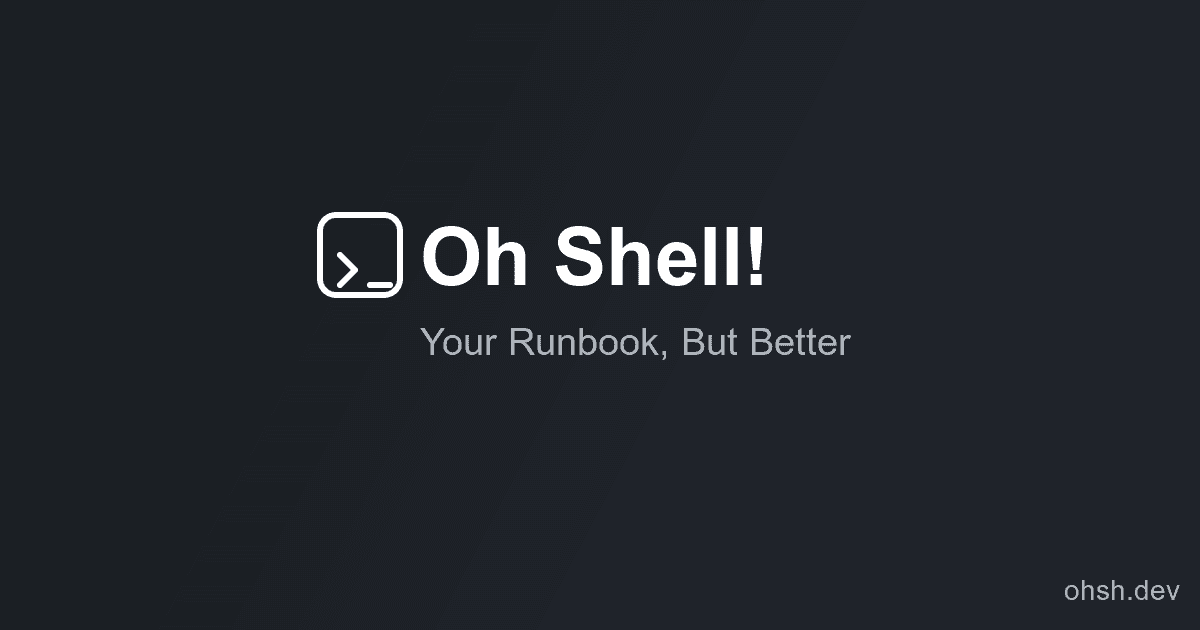When incidents strike, having a well-documented runbook can mean the difference between a quick resolution and prolonged downtime. Let's explore why runbooks are crucial and how Oh Shell! helps teams create and maintain them effectively.
What is an Incident Runbook?
An incident runbook is a standardized document that guides teams through the process of responding to and resolving specific types of incidents. Think of it as your emergency playbook - a clear set of instructions that anyone on the team can follow, even under pressure.
Why Runbooks Matter
Reduced Mean Time to Resolution (MTTR)
With clear, step-by-step instructions, teams can diagnose and resolve issues faster. No more scrambling through documentation or waiting for the one person who "knows how to fix it."
Consistent Response
Runbooks ensure that incidents are handled consistently, regardless of who's on call. This standardization helps prevent human error and ensures best practices are followed every time.
Knowledge Transfer
New team members can get up to speed quickly by studying runbooks. They serve as both training material and reference documentation.
Creating Effective Runbooks
1. Start with the Basics
Every runbook should include:
- Incident classification and severity levels
- Initial assessment steps
- Key metrics and monitoring dashboards
- Common symptoms and their likely causes
- Step-by-step troubleshooting procedures
- Escalation paths and contact information
2. Keep it Clear and Concise
- Use simple, direct language
- Break complex procedures into smaller steps
- Add estimated time for each step
3. Regular Updates
Runbooks should be living documents that evolve with your system:
- Review after each incident
- Update when systems change
- Remove outdated information
- Add new learnings and best practices
How Oh Shell! Helps
The
ohshAI-Powered Runbook Generation
Oh Shell! leverages advanced AI to transform your terminal sessions into comprehensive runbooks automatically. Simply record your troubleshooting process using the
ohshThe generated documentation includes not just the commands used, but also explanatory context, expected outcomes, and potential variations. Once generated, you can easily push these runbooks to your team's preferred documentation platforms like Notion, Confluence, or GitHub with built-in integrations.
And this is just the beginning - the platform is continuously evolving with new integrations and features to make runbook creation and management even more seamless.
- Extract key troubleshooting steps
- Identify common patterns and solutions
- Structure information in a clear, actionable format
- Suggest improvements based on past incidents
Continuous Learning
The platform gets smarter over time:
- Learns from how teams use runbooks
- Identifies gaps in documentation

